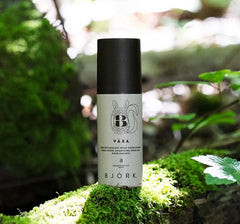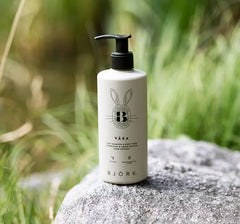Gardening with your children is a wonderful activity that can be adapted to the space you have available. Whether you have a large garden, a small patio or just a few windowsills indoors, there are many ways to engage your children in gardening, learning about nature and spending quality time together. Here are some tips and ideas for gardening with kids depending on your available space.
The image shows our Cereal bowl and 1-2-3 Sip! Cup.
Garden: Great Opportunities and Space for Creativity
Plan a child-friendly garden
Shared Cultivations :
- Prepare the soil by weeding and mixing in compost or manure to improve the quality of the soil.
- Create a plan for which plants you want to grow. Kids love fast-growing plants like radishes (harvest in 3-4 weeks), sunflowers (bloom in 2-3 months), and sugar snap peas (harvest in 60-70 days).
- Mark the area with small fences or stones so the children know where their part of the garden is.
Easy-to-grow Plants :
- Carrots : Sow seeds directly into the ground in early spring or late fall. They take 2-4 months to grow to harvest.
- Radishes : Sow seeds directly in the ground and water regularly. Radishes mature quickly and can be harvested within 3-4 weeks.
- Pumpkins : Sow seeds directly in the ground after the last frost. Pumpkins take 3-4 months to ripen.
Theme Gardens :
- Butterfly garden : Plant flowers that attract butterflies, such as lavender, zinnia and buddelia. These plants offer nectar and attractiveness to butterflies.
- Scent garden : Plant plants with lovely scents such as mint, lavender and rosemary. The children can rub the leaves to feel the different scents.
- Pizza Garden : Grow tomatoes, basil, oregano and peppers. These can be used to make homemade pizzas, which is both educational and fun for the kids - and yummy for the whole family!
Composting :
- Compost bin : Create a compost pile or use a compost bin.
- What can be composted? : Teach children to add fruit and vegetable scraps, eggshells, coffee grounds and yard waste. Avoid meat, dairy products and oils.
- Care : Turn the compost regularly to aerate it and speed up the decomposition process.
Watering and Caring for the Plants :
- Tools : Give children small watering cans and gardening tools.
- Routines : Create a watering schedule and teach them to check soil moisture before watering.
The image shows our 1-2-3 Sip! Cup.
Patio: Compact and Efficient Cultivation
Utilize Vertical Surfaces
Vertical Cultivation :
- Climbing Plants : Plant peas, beans and tomatoes near a support or trellis. Secure the plants gently with garden twine as they grow.
- Hanging Pots : Use hanging pots for strawberries, herbs and small tomato plants. Place them in a sunny location.
Pallet Collars and Pots :
- Pallet collars : Fill pallet collars with good soil and compost. Plant vegetables such as lettuce, spinach and herbs. These plants have shallower roots and do well in pallet collars.
- Large Pots : Use large pots to grow potatoes, carrots and peppers. Make sure the pots have drainage holes to prevent overwatering.
Mini-Greenhouse :
- DIY Greenhouse : Cut off the bottom of large plastic bottles and place them over young plants to create a mini greenhouse.
- Small Greenhouses : Use small plastic or wooden boxes with clear lids to grow seeds early in the season.
Herbs and Kitchen Garden :
- Grow Herbs : Plant herbs such as basil, parsley and mint in small pots or pallet collars. The children can harvest the herbs and use them in cooking.
- Care : Show children how to properly cut herbs to promote new growth.
Indoors: Creative and Educational Projects
Window cultivation
Herb garden on the Fensterbräda :
- Pots and Jars : Use small pots or recycled cans. Fill them with potting soil and sow herbs such as basil, chives and coriander.
- Placement : Place the pots on a sunny windowsill and water regularly.
Microgreens :
- Materials : Use shallow trays or bowls and fill them with a thin layer of soil.
- Sow Seeds : Sprinkle cress, radish or pea shoots seeds over the soil and cover with a thin layer of soil. Water lightly and keep the soil moist.
- Harvest : Microgreens are ready to harvest within 1-2 weeks when they are about 5 cm tall.
Reuse of food waste :
- Example : Use cut parts of lettuce, celery and onion. Place them in small bowls of water and place in a sunny location. Change the water regularly.
- Observation : The children can observe how the plants start to grow again from these food scraps.
Terrarium :
- Materials : Use a glass container and fill the bottom with small stones for drainage. Then add a layer of activated carbon and then soil.
- Plant : Plant small plants such as succulents or ferns. Decorate with small stones or figurines to create a miniature world.
- Care : Spray lightly with water and keep the terrarium in a place with indirect light.
Frog farming :
- Seeds : Use seeds such as alfalfa, mung beans or sunflower seeds.
- Method : Soak the seeds overnight and then rinse them. Place them in a germination jar or a glass jar covered with gauze and keep them in a dark place.
- Care : Rinse the seeds twice a day until the sprouts are ready to harvest, usually within 3-7 days.
No matter how much or how little space you have, there are always ways to get your kids involved in gardening and growing. By adapting the activities to your available space, you can create an educational and fun environment where the children can develop a love of nature and an understanding of sustainability. So put on your gloves and start your green adventure together – your kids will thank you for the memories and lessons you create together!








